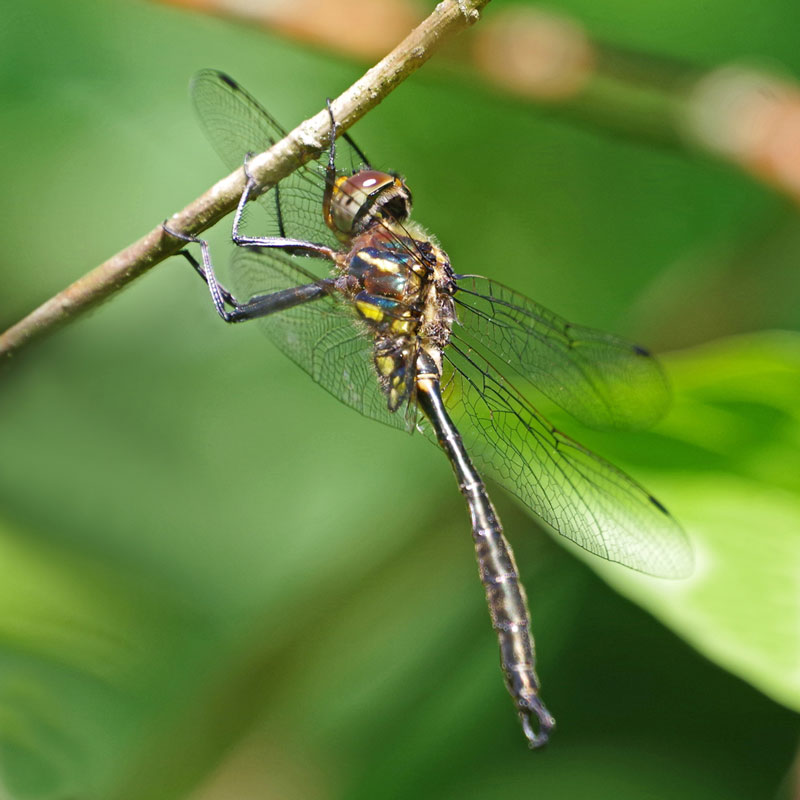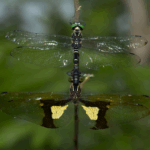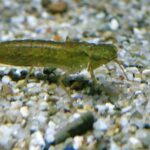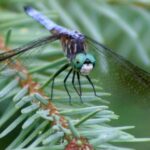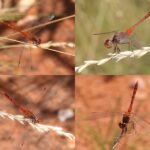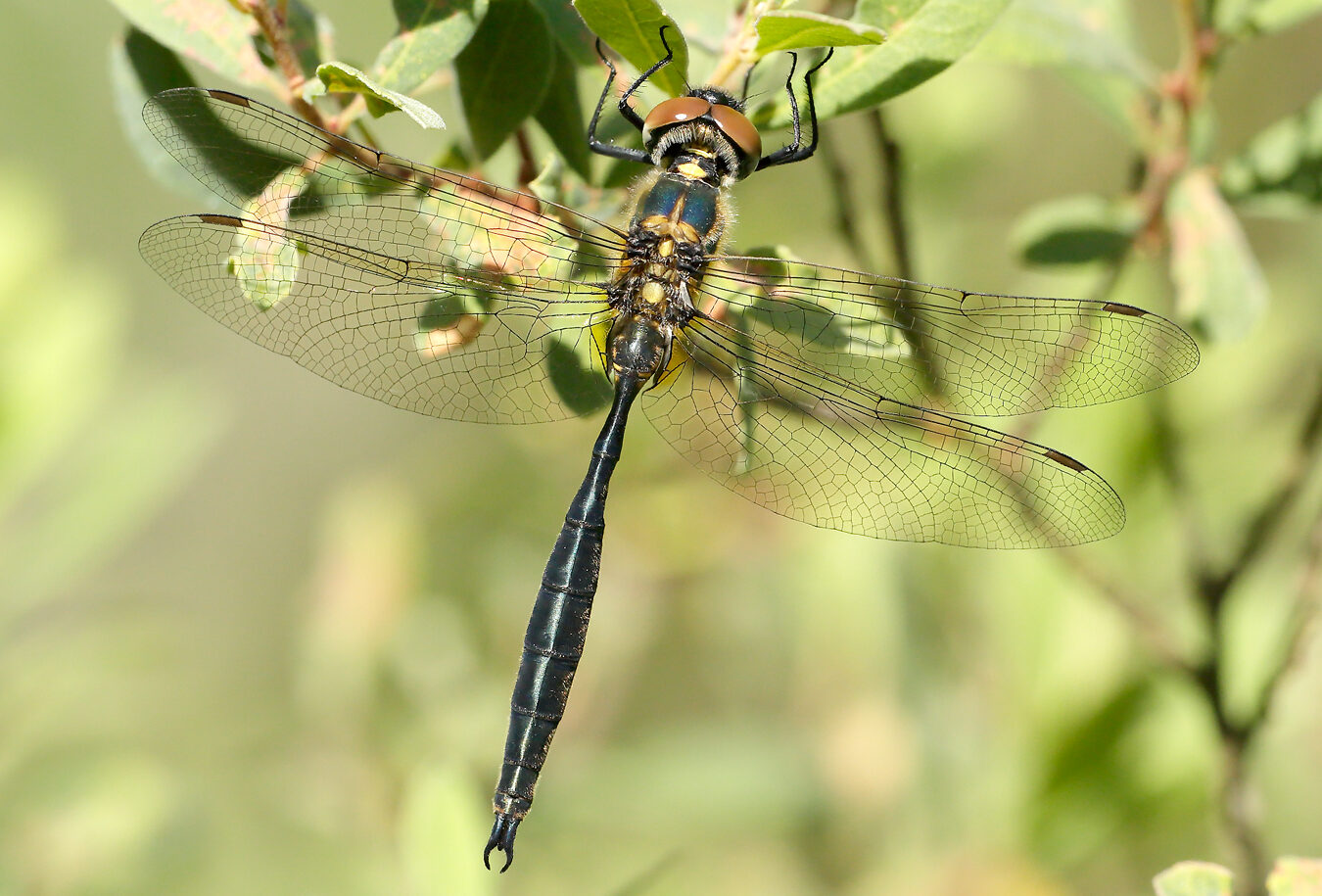
Dark metallic Dragonfly.
Male: obviously waisted abdomen.
Female: broader abdomen that’s more parallel sided.
Habitat
Breeds in moorland bogs and pools, often with much Sphagnum.
Adults patrol wet meadows and open areas in pine woods or on moors with scattered trees.
Life Cycle
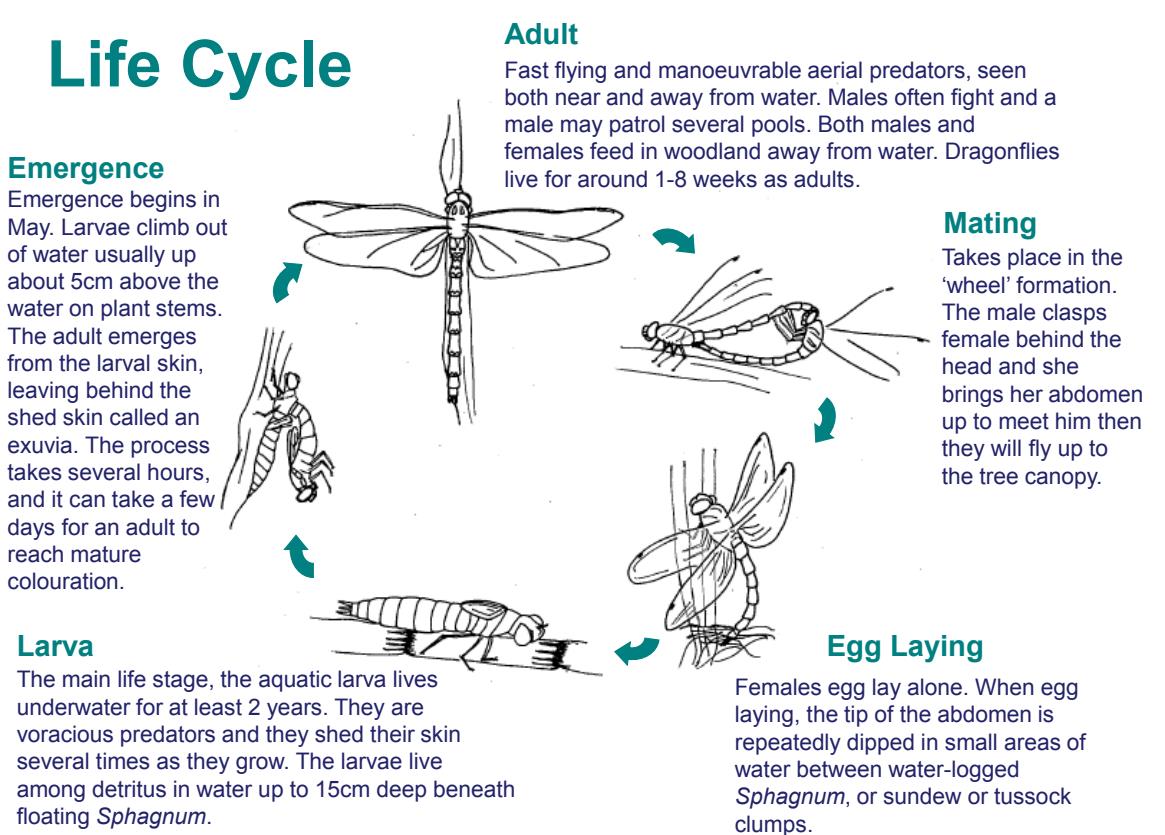
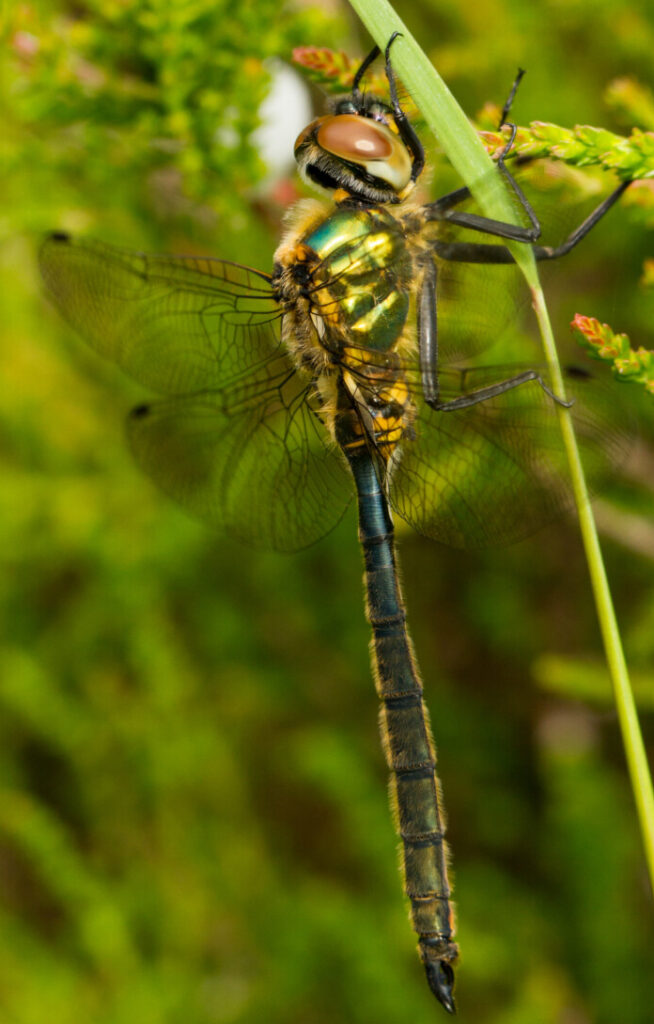
Larval Information
Emerald Dragonfly larvae have a squat spider-like body-shape similar to Chaser, Skimmers and Darters, but significantly longer back legs.
Smallest Emerald Dragonfly larvae: 17-20 mm.
Adult Identification
Emerald Dragonfly larvae have a squat spider-like body-shape similar to Chaser, Skimmers and Darters, but significantly longer back legs.
Smallest Emerald Dragonfly larvae: 17-20 mm.
The northern emerald (Somatochlora arctica) is a middle-sized species of dragonfly first described by Johan Wilhelm Zetterstedt in 1840. The male can be recognised by its pincer-like appendages and its narrow-waisted body. The female has distinctive orange-yellow spots on (only) the third segment of the abdomen.
This species lives in bogs and lays its eggs in very small water-filled depressions. It hunts between trees and avoids open spaces.
In Great Britain, it is only present in north-western Scotland and is confined to the south-western part of Ireland.[3] It is present in all of northern Eurasia. In Western Europe, it is present in alpine areas and wherever a suitable habitat can be found. It is found in the Rila mountains of Bulgaria.
Behaviour
Flight season: May – September (mainly June / July).This species forages high in treetops but mates lower in shrubs. Unlike theother two species of Emerald dragonflies in the UK, the Northern Emeraldtypically perches near the ground rather than in trees.
Males: In territory, males can be found flying low and erratically over bogpools and also flying between potential breeding pools, but they are elusive.
Females: Females oviposit alone by dipping their abdomens into the openwater, bog moss or peat repeatedly.
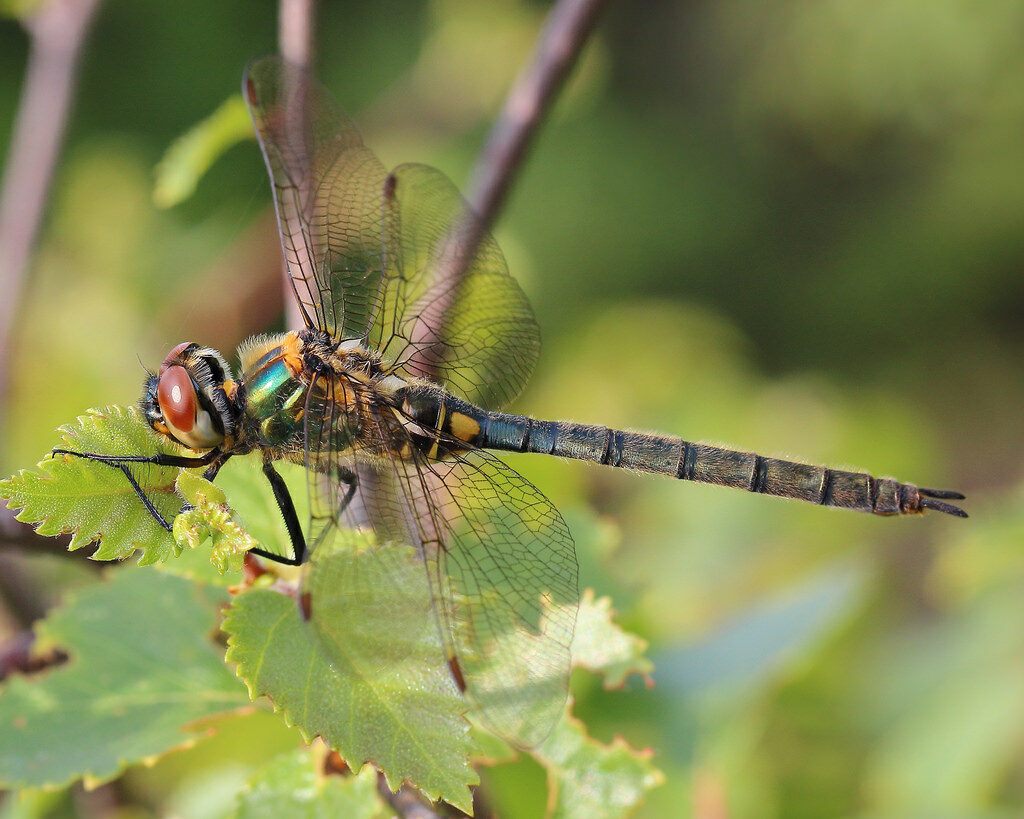
ID Features
Length: 45-51mmThis is one of three emerald dragonflyspecies found in Scotland, the other twoare the Brilliant Emerald and DownyEmerald. The Northern Emerald is shorterthan the Brilliant Emerald with a darker,almost black, metallic green abdomenwith paired yellow markings at the top. Ithas bright green eyes when mature anda bronze-green thorax. There is a yellowspot on either side of the ‘face’, next tothe eyes.
Males: Males have a narrow ‘waist’ atthe top of the bulbous abdomen. Theabdomen is widest in the middle, whereasthe Downy Emerald’s abdomen is bulbousat the end. The anal appendages on thetip of the abdomen are large and callipershaped. Wings have a yellow tint.
Females: The abdomen is a narrowrectangular shape. Yellow wing bases.
Larvae: Very hairy, squat and spider-likewith long legs and a rounded abdomen. Afully developed larva is 17 – 20mm long.
The northern emerald (Somatochlora arctica) is a middle-sized species of dragonfly first described by Johan Wilhelm Zetterstedt in 1840. The male can be recognised by its pincer-like appendages and its narrow-waisted body. The female has distinctive orange-yellow spots on (only) the third segment of the abdomen. This species lives in bogs and lays its eggs in very small water-filled depressions. It hunts between trees and avoids open spaces. In Great Britain, it is only present in north-western Scotland and is confined to the south-western part of Ireland. It is present in all of northern Eurasia. In Western Europe, it is present in alpine areas and wherever a suitable habitat can be found. It is found in the Rila mountains of Bulgaria.

